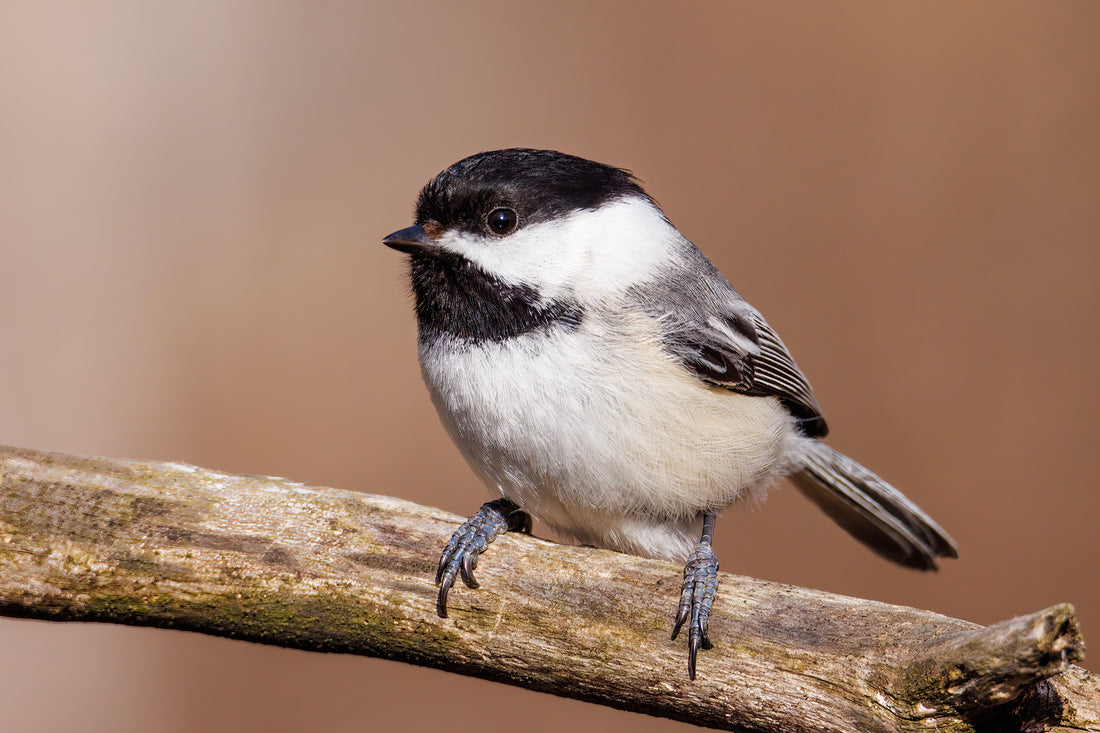
The 7 Species of Chickadees
Share
Cute and compact, chickadees are adorable little songbirds that you would be lucky to spot in your backyard. Learn all about the nuances and intricacies of the 7 different types as well as tips on how to lure them to your backyard!
All About the Chickadee
Friendly and cute, chickadees are curious little birds beloved by many. Known for their sweet demeanor and “dee-dee-dee” song, chickadees are easy to pick out in a crowd. North America is home to 7 different chickadee species, each with their own defining characteristics.
Black-Capped
Mountain
Boreal
Carolina
Gray-Headed
Mexican
Chestnut-backed
We’ll give a more comprehensive breakdown of the different chickadee species below, but first we’ll cover the several things they all have in common. Their song, their diet, their shape, and size are unifiers across all chickadee species.
The Chickadee Song
It’s no wonder the chickadee is named as such. This talkative bird has a distinct call and they want the world to know it! Chickadees have a “chick-a-dee-dee-dee” song, the quality of which varies based on the species. In addition to their trademark call, these birds mix in a collection of high-pitched, wheezy notes that increase in pitch when predators are near.
Listen to the sounds of the Black-capped Chickadee here!
What Chickadees Eat
Chickadees are notorious insectivores that will devour insects at any stage of life: eggs, larvae, pupae, and adults. Insects make up the bulk of their diet during the summer but this changes as the weather cools. In the winter, chickadees turn into voracious seed-eaters, which makes them regulars at backyard bird feeders with wild bird feed.
Sunflower seeds, peanuts, chopped nuts, high-fat suet, and peanut butter are several go-to types of food for chickadees.
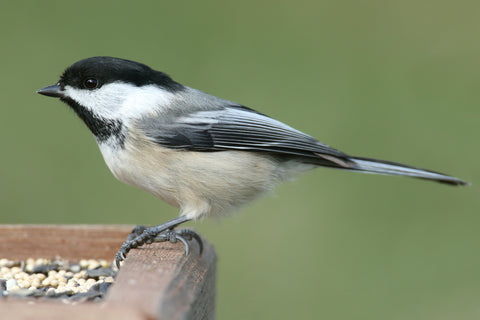
Common Physical Characteristics of Chickadees
While each species has its own set of features that makes it stand out from other banditries, just about all chickadees are between 4-6 inches long and have white cheeks, dark crowns and throats, and gray wings and tails. Perhaps that’s why a flock of chickadees is called a bandit – they look like they’re wearing black masks!
They’re known for having short necks, large heads, and spherical bodies. Beyond that, however, their looks vary according to the type of species.
The 7 Chickadee Species
Black-Capped Chickadee (Poecile atricapillus)
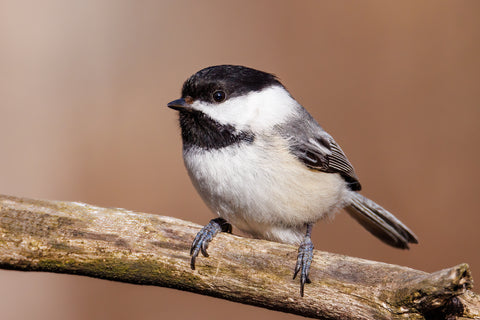
The Black-capped chickadee has the most widespread range of all the chickadee species in the US. They can be found throughout most of the North American continent, from Alaska and Canada all the way south to New Mexico and into Tennessee. Black-capped chickadees look a lot like Carolina chickadees but with longer tails, more white in their wings, and a broader throat patch. They also have a distinguishing two-note whistle that many liken to a “fee-bee.”
Mountain Chickadee (Poecile gambeli)

As evidenced by their name, Mountain chickadees amongst the mountains of the coniferous forests in western North America. They are identifiable by the white stripe above their eyes that cuts through their black caps. Mountain chickadees have a decidedly hoarse, almost raspy call that sounds like a Black-capped Chickadee with a sore throat.
Boreal Chickadee (Poecile hudsonicus)
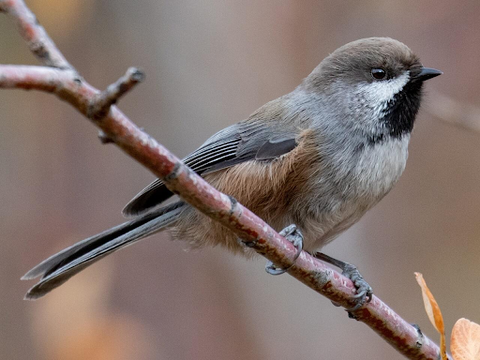
This bird looks different from some of its chickadee cousins in that it has a brown cap. The Boreal chickadee lives in the boreal forests of Canada, Alaska and the northeastern states of the contiguous U.S. This species is known for its slow and scratchy call.
Carolina Chickadee (Poecile carolinensis)

Look throughout the south-central, Mid-Atlantic, and southeastern segments of the U.S. and you’ll likely find the Carolina chickadee. Popular amongst forests, suburban yards, and urban gardens, the Carolina chickadee’s territories often overlap with the Black-capped, which causes many to confuse the two. That said, there are subtle differences that distinguish the two from one another. The Carolina chickadee has a higher and faster call than the black-capped. Additionally, the Carolina chickadee’s white cheeks become pale gray towards the nape, while the Black-capped chickadee’s cheeks remain completely white.
Gray-headed Chickadee (Poecile cinctus)

This is the rarest of all the North American chickadees. The Gray-headed chickadee’s range in North America is small, extending only from remote areas of Alaska to a corner of the Yukon Mountains in Canada.
Mexican Chickadee (Poecile sclateri)
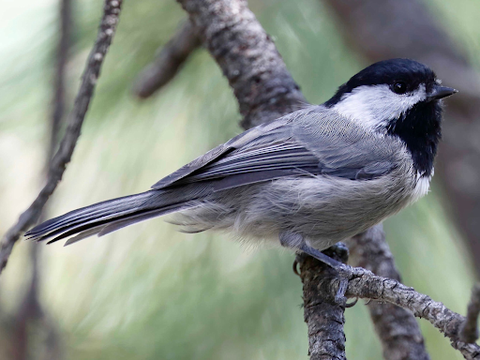
This is another rare chickadee species within the U.S. The Mexican chickadee can only be found in the pine and spruce-fir forests of the Chiricahua and Animas Mountains of Arizona and New Mexico, respectively. Unlike other chickadees, these birds don’t need to switch from insects to seeds in the winter because the climate where they live remains mild year-round.
Chestnut-backed Chickadee (Poecile rufescens)

The littlest of the group comes last. As their name suggests, the chestnut-backed chickadee has a reddish-brown back. This bird can be found living in dense, shady coniferous forests along the West Coast of the U.S. and Canada, as well as in inland mountain ranges of Washington, Oregon, and Idaho. They sometimes even make an appearance at homes in cities and towns. This species’ call is decidedly high, thin, and squeaky with fewer “dees” than the others.
Valley Farms Chickadee Mix Wild Bird Food
$30.40
With winter just around the corner, it’s time to stock up on food for chickadees. Find the cleanest wild bird feed around right here at Valley Farms®.

